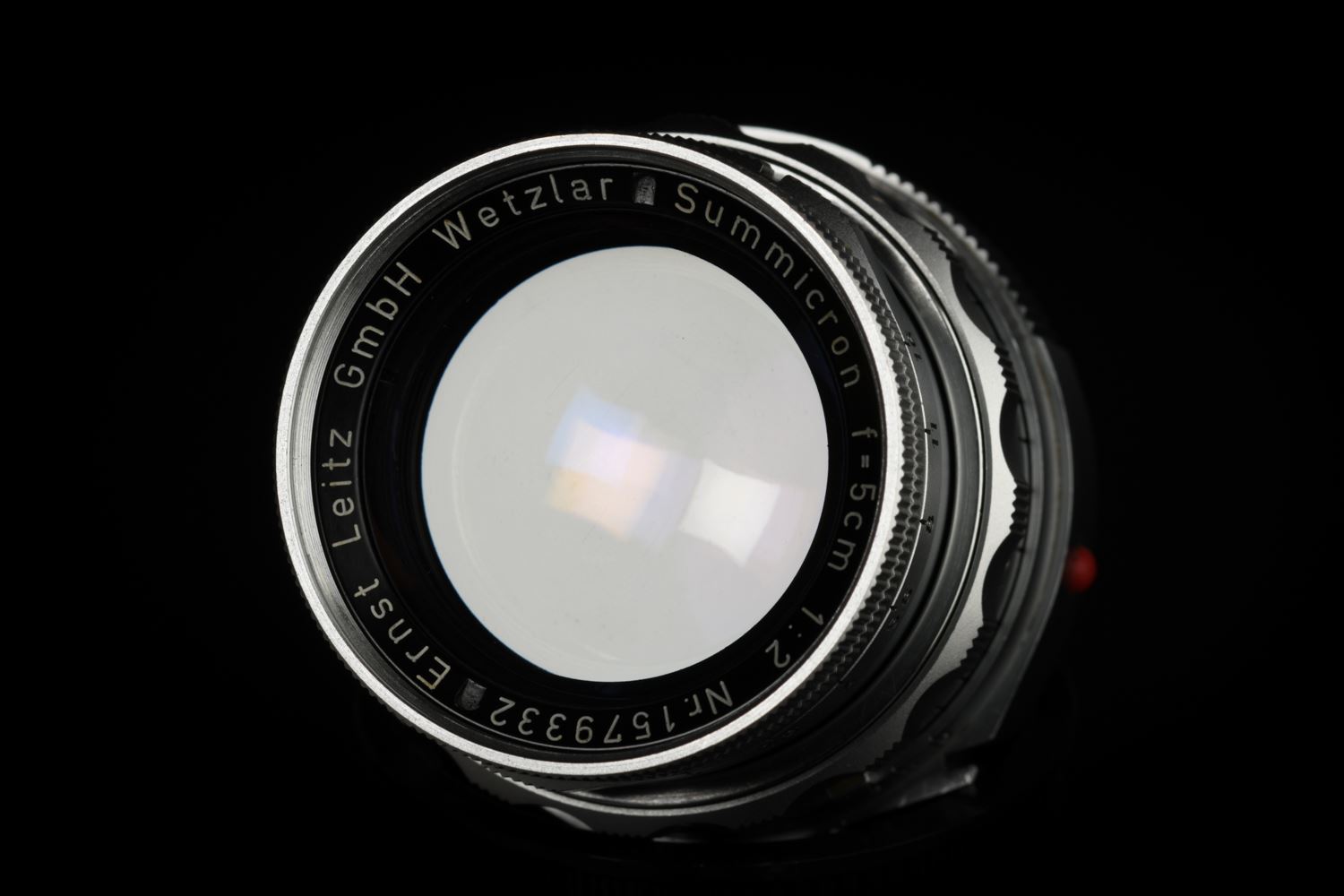

The Summicron 50 is noteworthy due to its appealing rendering and high level of performance in a light and compact housing.Ĭompared to other lenses using the double-gauss design, which includes most 50mm lenses ever made, the Summicron 50 generally performs on a much higher level. There is an abundance of 50mm lenses to choose from. Bokeh should theoretically also suffer from the fewer blades but in practice it's not an issue. Slightly fewer than some peers with less refined sunstars as a result. The integrated hood slides out smoothly without play. Full aperture stops are marked with corresponding numbers, half-stops are unmarked. There's a clear and usable depth of field scale available. On the black version of the lens the metric scale is painted white and the imperial one is yellow, both clearly visible even in low light.

Lens markings are engraved and painted in Leicas very pretty, Microgramma-like, square font. The black version is more prone to showing scuffing and wear. The black lens is made of anodised aluminum resulting in lower weight than the silver version made of brass. All moveable parts work with impeccable precision.īlack and silver versions of the lens were originally sold, but the silver seems to be discontinued. Compared to SLR lenses, it’s positively tiny.Ĭonstruction and materials are both top notch – Leica lenses are generally built to last and their modern lenses in particular, are in a league of their own. Even compared to other M-mount lenses it’s small to moderately sized. The lens is impressively small considering its specifications, extending just over 4cm from the mount. Leica have become famous for their high level of craftsmanship. Worth noting is that the preceding version IV, produced between 1979–1994, is supposedly optically identical to this lens, however coatings tend to be improved in more recent lenses. There’s also a sixth version being sold in parallel to this lens, called the APO-Summicron 50 ASPH that much more expensive due to being much more complex and highly corrected.

This article is about what’s commonly referred to as the fifth version – V, introduced in 1994. Leica has been making M-mount Summicron 50s since the 1950s, which means that there are a number of different versions available on the used market. It’s a compact lens for its specifications, but dense and heavy for its size, especially compared to most AF lenses. Its flexible focal length, fairly large aperture, high performance, compact size and reasonable price makes this one of the most popular Leica lenses. The Leica Summicron 50 is a classic normal lens for Leica M-mount. Intro Specs Appearance Ergonomics Image quality In use Alternatives Conclusion


 0 kommentar(er)
0 kommentar(er)
